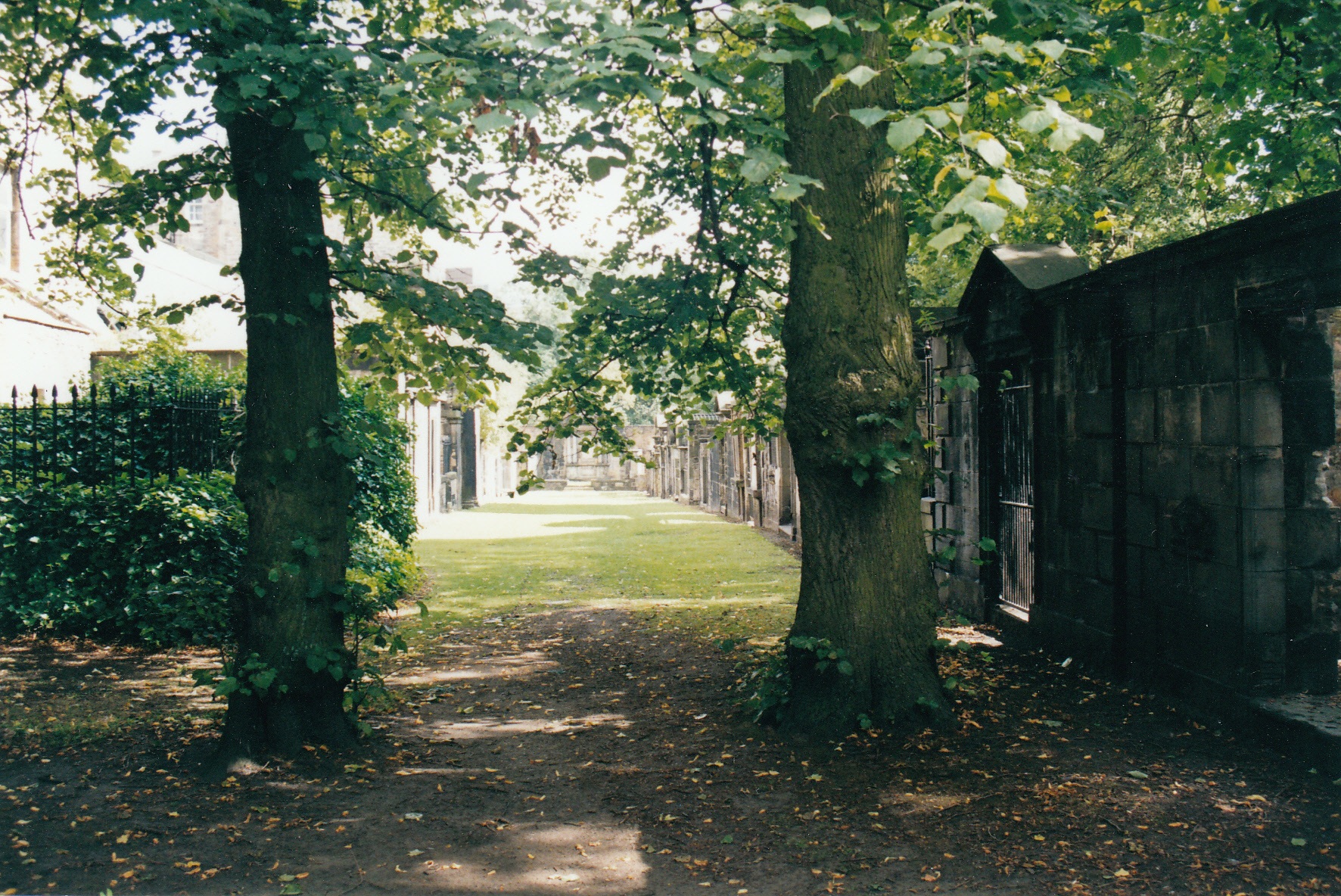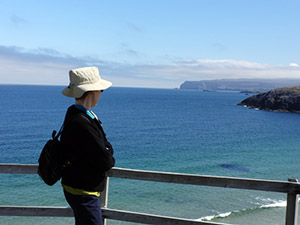After the feast (more or less) came the Speech. Most of the company were, however, now in a tolerant mood, at that delightful stage which they called “filling up the corners”. They were sipping their favourite drinks, and nibbling at their favorite dainties, and their fears were forgotten. They were prepared to listen to anything, and to cheer at every full stop.
--J.R.R.Tolkien, The Lord of the Rings: The Fellowship of the Ring

|
||||||
|
Ghosts for Fun and Profit, by Lillian Stewart Carl
 |
|
A corner of Greyfriar’s Kirkyard, Edinburgh
|
The immortal Sherlock Holmes proclaims in “The Sussex Vampire”, “This Agency stands flat-footed upon the ground and there it must remain. The world is big enough for us. No ghost need apply.”
My imagination being what it is, I immediately envision ghosts lined up at a paranormal job fair, muttering about discrimination, perhaps even filing suits against Holmes’s agency with the Equal Employment Commission....
I’ve always loved fantasy—I consider stories of the paranormal very much part of the fantasy continuum—and I’ve always loved history. It’s no surprise, then, that I’d write about mysterious footsteps in the corridors of a medieval castle, or shadows moving on a half-timbered wall, or artifacts, battlefields, and ancient manuscripts that hold eerie resonances of the past.
I don’t write about vampires or werewolves or demons. I write about ghosts, manifestations of the past lingering into the present, of unresolved history and uneasy memory.
Holmes would say that ghosts don’t exist, so cannot be the movers and shakers in one of his cases.
The main character in the Fairbairn/Cameron mystery series, Jean Fairbairn, would tell Holmes that it doesn’t matter whether ghosts (or the Loch Ness monster, or the glamorous deeds of a historical character) actually exist or not, just as long as people believe they do. Because beliefs make people act, and move, and shake.
Jean and Alasdair Cameron are the protagonists of five long cross-genre novels and a new short one, The Mortsafe. Jean is a former history professor now writing for a Scottish history-and-travel magazine who inadvertently becomes an amateur sleuth. Alasdair Cameron begins the series as a professional sleuth, a Scottish police detective.
It’s in the first book, The Secret Portrait, that Jean sees a ghost and realizes Alasdair, of all people, can see it, too.
Jean looked around, not knowing whether to hug him or hit him. “No snappy comebacks? No skepticism? Or have you known all this time you’re allergic to ghosts, too?”
“Well then,” he said, with a crimp of his mouth that was almost a rueful smile, “I suppose I was wrong about all the ghosts being tired. Not for those with eyes to see and hearts to know.”
The like us hung unspoken in the air.
She and Alasdair regard their discomforting if mutual “allergy” as a deep, dark secret. As she muses in book number five, The Blue Hackle:
Jean remembered her own youth, the impatient sighs, the indulgent nods, the teasing and, worse, the sincere offers of psychiatric help. And then there were the people who assumed she must share their own weirdnesses.
Even so, Jean’s stock-in-trade at her magazine, Great Scot, is ghost stories and legends—the truth behind them and the way they can be distorted by the true believers. Having a significant other with the skeptical eye of the policeman dovetails neatly with her work, even as it leads to a few heated discussions and more than a little eye-rolling.
Ghosts, after all, make great marketing hooks. There are books, TV shows, movies, tours of haunted sites, mediums and seers and other speakers for the dead. Or to the dead, even. Ghostmongers—and Jean admits she herself is one—know that a good ghost story doesn’t have to be true in order to be real, and to attract customers.
There are few places in the world where this is more true than in haunted Edinburgh, the capital of haunted Scotland. Where, in no coincidence whatsoever, Jean lives. In The Mortsafe, she says, “...Edinburgh’s teeming with so many ghost stories the poor souls would have to take numbers and wait their turn before saying boo.”
The story takes place in the darkness of February, in the gloom of Edinburgh’s notorious underground city and in other legend-shadowed spots such as Greyfriars Kirkyard, billed as the most haunted churchyard in the world.
The photograph on the cover of The Mortsafe is of empty, eyeless tombs at Greyfriars. Another photo shows the same area from a different angle. If you squint just right, maybe you can see something moving in the shadows!
Among the graves at Greyfriars lie two mortsafes. A mortsafe is an iron cage locked over a grave to deter body snatchers. They haven’t been used in Scottish kirkyards for almost two centuries, ever since the laws about dissecting bodies were changed.
In The Mortsafe, the discovery of one next to two decayed bodies in a hidden vault beneath the streets of Edinburgh sets Jean and Alasdair onto the trail of not just one but two cold cases, both of which are inextricably entwined not only with the thud-and-blunder of Scotland’s history, but with the merchandising skills of contemporary Scots.
Among those Scots is a militant cynic who’s written a stage revue titled “Ghosts for Fun and Profit”. Alasdair suggests that would work as Jean’s by-line.
Well yes, it would. And yet Jean knows only too well that while ghosts may be intriguing, they’re hardly fun, not when they’re reminders of untimely death and the grief of the living.
February brings darkness, yes, and also the passionate red hearts and flowers of Valentine’s Day. It brings the ancient Celtic quarter day of Imbolc or Candlemas, which we now know (why, I have no idea) as Groundhog Day, a harbinger of spring, and light in dark places.
Ghosts aren’t necessarily the movers and shakers in any of my cases, either. Even Jean will admit that most of the time, you see ghosts because you expect to see ghosts. Tourists don’t tour Edinburgh’s notorious underground city anticipating no more than gloom and bad smells.
But if the thing going bump in the night is doing so only in your own imagination, that doesn’t make it any less real—never mind Sherlock Holmes and his flat feet!


Lillian in two of her Scottish happy places
Copies of Lillian's books and stories are widely available in both paper and electronic versions
Lillian's Facebook Fan Page
|
| Home | Who
Am I? | Books | Short
Stories | Contact | |




